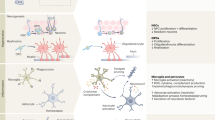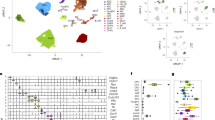Abstract
As human lifespan increases, a greater fraction of the population is suffering from age-related cognitive impairments, making it important to elucidate a means to combat the effects of aging1,2. Here we report that exposure of an aged animal to young blood can counteract and reverse pre-existing effects of brain aging at the molecular, structural, functional and cognitive level. Genome-wide microarray analysis of heterochronic parabionts—in which circulatory systems of young and aged animals are connected—identified synaptic plasticity–related transcriptional changes in the hippocampus of aged mice. Dendritic spine density of mature neurons increased and synaptic plasticity improved in the hippocampus of aged heterochronic parabionts. At the cognitive level, systemic administration of young blood plasma into aged mice improved age-related cognitive impairments in both contextual fear conditioning and spatial learning and memory. Structural and cognitive enhancements elicited by exposure to young blood are mediated, in part, by activation of the cyclic AMP response element binding protein (Creb) in the aged hippocampus. Our data indicate that exposure of aged mice to young blood late in life is capable of rejuvenating synaptic plasticity and improving cognitive function.
This is a preview of subscription content, access via your institution
Access options
Subscribe to this journal
Receive 12 print issues and online access
$209.00 per year
only $17.42 per issue
Buy this article
- Purchase on SpringerLink
- Instant access to full article PDF
Prices may be subject to local taxes which are calculated during checkout



Similar content being viewed by others
References
Hebert, L.E., Scherr, P.A., Bienias, J.L., Bennett, D.A. & Evans, D.A. Alzheimer disease in the US population: prevalence estimates using the 2000 census. Arch. Neurol. 60, 1119–1122 (2003).
Bishop, N.A., Lu, T. & Yankner, B.A. Neural mechanisms of ageing and cognitive decline. Nature 464, 529–535 (2010).
Hedden, T. & Gabrieli, J.D. Insights into the ageing mind: a view from cognitive neuroscience. Nat. Rev. Neurosci. 5, 87–96 (2004).
Raz, N., Gunning-Dixon, F.M., Head, D., Dupuis, J.H. & Acker, J.D. Neuroanatomical correlates of cognitive aging: evidence from structural magnetic resonance imaging. Neuropsychology 12, 95–114 (1998).
Mattson, M.P. & Magnus, T. Ageing and neuronal vulnerability. Nat. Rev. Neurosci. 7, 278–294 (2006).
Rapp, P.R. & Heindel, W.C. Memory systems in normal and pathological aging. Curr. Opin. Neurol. 7, 294–298 (1994).
Andrews-Hanna, J.R. et al. Disruption of large-scale brain systems in advanced aging. Neuron 56, 924–935 (2007).
Scheff, S.W., Price, D.A., Schmitt, F.A., DeKosky, S.T. & Mufson, E.J. Synaptic alterations in CA1 in mild Alzheimer disease and mild cognitive impairment. Neurology 68, 1501–1508 (2007).
Nicholson, D.A., Yoshida, R., Berry, R.W., Gallagher, M. & Geinisman, Y. Reduction in size of perforated postsynaptic densities in hippocampal axospinous synapses and age-related spatial learning impairments. J. Neurosci. 24, 7648–7653 (2004).
Smith, T.D., Adams, M.M., Gallagher, M., Morrison, J.H. & Rapp, P.R. Circuit-specific alterations in hippocampal synaptophysin immunoreactivity predict spatial learning impairment in aged rats. J. Neurosci. 20, 6587–6593 (2000).
Morrison, J.H. & Baxter, M.G. The ageing cortical synapse: hallmarks and implications for cognitive decline. Nat. Rev. Neurosci. 13, 240–250 (2012).
Villeda, S.A. et al. The ageing systemic milieu negatively regulates neurogenesis and cognitive function. Nature 477, 90–94 (2011).
Pavlopoulos, E. et al. Molecular mechanism for age-related memory loss: the histone-binding protein RbAp48. Sci. Transl. Med. 5, 200ra115 (2013).
Conboy, I.M. et al. Rejuvenation of aged progenitor cells by exposure to a young systemic environment. Nature 433, 760–764 (2005).
Brack, A.S. et al. Increased Wnt signaling during aging alters muscle stem cell fate and increases fibrosis. Science 317, 807–810 (2007).
Ruckh, J.M. et al. Rejuvenation of regeneration in the aging central nervous system. Cell Stem Cell 10, 96–103 (2012).
Loffredo, F.S. et al. Growth differentiation factor 11 is a circulating factor that reverses age-related cardiac hypertrophy. Cell 153, 828–839 (2013).
Geinisman, Y., de Toledo-Morrell, L. & Morrell, F. Loss of perforated synapses in the dentate gyrus: morphological substrate of memory deficit in aged rats. Proc. Natl. Acad. Sci. USA 83, 3027–3031 (1986).
Rosenzweig, E.S. & Barnes, C.A. Impact of aging on hippocampal function: plasticity, network dynamics, and cognition. Prog. Neurobiol. 69, 143–179 (2003).
Small, S.A., Schobel, S.A., Buxton, R.B., Witter, M.P. & Barnes, C.A. A pathophysiological framework of hippocampal dysfunction in ageing and disease. Nat. Rev. Neurosci. 12, 585–601 (2011).
Alberini, C.M. Transcription factors in long-term memory and synaptic plasticity. Physiol. Rev. 89, 121–145 (2009).
Bliss, T.V. & Collingridge, G.L. A synaptic model of memory: long-term potentiation in the hippocampus. Nature 361, 31–39 (1993).
Frey, U. & Morris, R.G. Synaptic tagging and long-term potentiation. Nature 385, 533–536 (1997).
Jeong, H. et al. Sirt1 mediates neuroprotection from mutant huntingtin by activation of the TORC1 and CREB transcriptional pathway. Nat. Med. 18, 159–165 (2012).
Merrill, D.A., Karim, R., Darraq, M., Chiba, A.A. & Tuszynski, M.H. Hippocampal cell genesis does not correlate with spatial learning ability in aged rats. J. Comp. Neurol. 459, 201–207 (2003).
Bizon, J.L. & Gallagher, M. Production of new cells in the rat dentate gyrus over the lifespan: relation to cognitive decline. Eur. J. Neurosci. 18, 215–219 (2003).
Drapeau, E. et al. Spatial memory performances of aged rats in the water maze predict levels of hippocampal neurogenesis. Proc. Natl. Acad. Sci. USA 100, 14385–14390 (2003).
Smolinsky, A.N. et al. Analysis of grooming behavior and its utility in studying animal stress, anxiety, and depression. in Mouse Models of Mood and Anxiety Disorders (ed. Gould, T.) 21–36 (Humana Press, NY, 2009).
Gould, T.D. Mood and Anxiety Related Phenotypes in Mice: Characterization Using Behavioral Tests (Humana Press, New York, 2009).
Luo, J. et al. Glia-dependent TGF-β signaling, acting independently of the TH17 pathway, is critical for initiation of murine autoimmune encephalomyelitis. J. Clin. Invest. 117, 3306–3315 (2007).
Xie, X. & Smart, T.G. Modulation of long-term potentiation in rat hippocampal pyramidal neurons by zinc. Pflugers Arch. 427, 481–486 (1994).
Grimm, D. et al. In vitro and in vivo gene therapy vector evolution via multispecies interbreeding and retargeting of adeno-associated viruses. J. Virol. 82, 5887–5911 (2008).
Xu, W. et al. Distinct neuronal coding schemes in memory revealed by selective erasure of fast synchronous synaptic transmission. Neuron 73, 990–1001 (2012).
Raber, J. et al. Irradiation enhances hippocampus-dependent cognition in mice deficient in extracellular superoxide dismutase. Hippocampus 21, 72–80 (2011).
Alamed, J., Wilcock, D.M., Diamond, D.M., Gordon, M.N. & Morgan, D. Two-day radial-arm water maze learning and memory task; robust resolution of amyloid-related memory deficits in transgenic mice. Nat. Protoc. 1, 1671–1679 (2006).
Acknowledgements
We thank A. Eggel, K. Lucin and N. Woodling for critical review and advice, and D. Jing and F. Lee (Cornell University) for Golgi stain reagents. This work was funded by California Institute for Regenerative Medicine (CIRM) fellowships (K.E.P. and K.L.), a Netherlands Organization for Scientific Research (NWO) Rubicon fellowship (J.M.), a Child Health Research Institute fellowship (Stanford National Institutes of Health (NIH)/National Center for Research Resources CTSA-UL1-RR025744, J.M.C.), a Jane Coffin Childs fellowship (J.M.C.), National Science Foundation fellowships (K.I.M. and J.U.), a National Research Service Award fellowship (1F31-AG034045-01, S.A.V.), anonymous (T.W.-C.), Veterans Affairs (T.W.-C.), the National Institute on Aging (AG045034, AG03144, T.W.-C.), CIRM (T.W.-C.), the University of California San Francisco (UCSF) Program for Breakthrough Biomedical Research, the Sandler Foundation (S.A.V.), the UCSF Clinical and Translational Science Institute (UL1-TR000004, S.A.V.) and an NIH Director's Independence Award (DP5-OD12178, S.A.V.).
Author information
Authors and Affiliations
Contributions
S.A.V., K.E.P., J.M., J.M.C., K.I.M., J.L., L.K.S. and K.L. performed parabiosis. S.A.V., K.I.M., G.B. and D.B. performed and/or analyzed microarray. S.A.V., K.E.P., R.W. and E.G.W. performed histological studies. J.M. and D.A.S. performed Golgi studies. B.Z. and X.S.X. performed electrophysiological studies. S.A.V., K.E.P., J.M.C., J.L., L.K.S., G.B., K.L. and J.U. performed plasma cognitive studies. J.M.C. performed maintenance and stress studies. J.M.C. and S.A.V. performed the denaturation study. K.E.P. and G.B. generated viral constructs. K.E.P. performed viral studies. F.M.L. provided reagents. S.A.V. and T.W.-C. designed and supervised the study and wrote the manuscript.
Corresponding authors
Ethics declarations
Competing interests
T.W.-C. has formed a company that follows up on the work described here.
Supplementary information
Supplementary Text and Figures
Supplementary Figures 1–12 and Supplementary Table 1 (PDF 3938 kb)
Rights and permissions
About this article
Cite this article
Villeda, S., Plambeck, K., Middeldorp, J. et al. Young blood reverses age-related impairments in cognitive function and synaptic plasticity in mice. Nat Med 20, 659–663 (2014). https://doi.org/10.1038/nm.3569
Received:
Accepted:
Published:
Issue Date:
DOI: https://doi.org/10.1038/nm.3569



